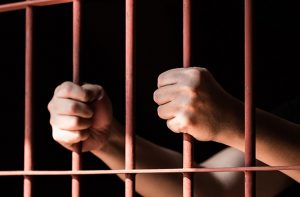Solitary Confinement, The Cruelest Form Of Punishment
In decades of practicing criminal law, solitary confinement has been the go-to, knee-jerk response to inmate misbehavior.
 Picture yourself locked in a small, featureless room, cement walls and floor, aluminum toilet affixed to the ground, a small slit of window big enough only to tell day from night.
Picture yourself locked in a small, featureless room, cement walls and floor, aluminum toilet affixed to the ground, a small slit of window big enough only to tell day from night.
Might it drive you crazy being cooped up in such a place, 23 hours a day for weeks, months, even years at a time. Little things become paramount like talking to another human being, taking a brief shower, or combing your hair.
Now picture that a person stuck there already suffers either a serious mental illness or a personality disorder. Is he likely to come out more stable or more insane?

Luxury, Lies, And A $10 Million Embezzlement
Locking people up, especially those with pre-existing mental illness, only exacerbates their sickness and can worsen how they act when returned to the prison’s general population. The “box,” the “hole,” the “SHU,” (segregated housing unit), becomes a revolving door for many inmates whose behavior could be addressed more effectively by other means.
In my decades of practicing criminal law, solitary confinement has been the go-to, knee-jerk response to inmate misbehavior — whether that behavior is incidental, like taking too long in the shower, or serious, like attacking another inmate or a guard.
There’s no doubt prisons must maintain order, discipline, and safety, but more and more states are realizing that solitary confinement does more harm than good.
I had a client just last week who suffers intermittent explosive disorder and was confined to solitary when he and another inmate had a fight. I set up a psychiatric exam for him, but he never made it. Guards reported they wouldn’t touch him after he’d covered himself and his cell in excrement.
Sponsored

Thomson Reuters' Claims Explorer: A Powerful Tool For Legal Claim Identification


Curbing Client And Talent Loss With Productivity Tech
Law Firm Business Development Is More Than Relationship Building

Curbing Client And Talent Loss With Productivity Tech
Another client, in segregation for the better part of 25 years, grew his hair so long that, piled in dreadlocks on his head, it almost reached the ceiling and when let down trailed the floor. The reason — washing and combing it gave him something to do. He maintained optimism, was an avid letter writer and reader and welcomed chats with whomever might be near. I got a call from his sister last week telling me that after all these years of stability, even he’s beginning to lose his mind from the isolation.
And no wonder. Solitary is inhuman and ineffective. Rather than amending the offender’s behavior, it makes him less stable and more angry. It’s a quick and meaningless way to get inmates out of general population without addressing what put them in jail in the first place.
Recognizing this, New York Gov. Andrew Cuomo signed into law last week a bill curtailing the use of solitary confinement. Inmates can still be boxed in a small cell for days at a time, but now the total amount of consecutive days cannot exceed 15, or 20 days over a two-month period. Punitive segregation will be banned for inmates under 22 and over 54, pregnant women, and some people with mental health issues (the catch is they have to have been diagnosed with Serious Mental Illness, a category sometimes difficult to discern.)
According to the HALT (Humane Alternatives to Long Term) Solitary Confinement Act, “Studies have consistently found that subjecting people to segregated confinement for twenty-two to twenty-four hours a day without meaningful human contact, programming, or therapy can cause deep and permanent psychological, physical, developmental, and social harm. People often have more difficulty complying with prison rules after being placed in segregated confinement.”
The law also sets up “high-security rehabilitation units” for those coming out of solitary to deal with the many issues they often face having been in solitary. A nice thought, but why not eliminate the harm all together?
Sponsored

Tackling Deposition Anxiety: How AI Is Changing The Way Lawyers Do Depositions

Luxury, Lies, And A $10 Million Embezzlement
According to a recent New York Times article, only 14 states have limited or banned punitive segregation. Depending on where the inmate is incarcerated, and whether it’s a state or federal prison, the view on punishment varies widely. Most places tip toward a quick fix — get the inmate out of general population and locked away. But the idea of imposing greater punishment is antiquated and debunked in most other settings.
Take childcare. When a child acts poorly, the idea of putting him in the corner with a dunce cap has long been denounced. Rather than humiliation and segregation, studies show that bringing the offender into the fold and affirming his life rather than denigrating it (building him up instead of pushing him down) works better. If a kid won’t sit still during class, don’t make him kneel on rice (my Catholic school upbringing); let him go outside and clap the erasers.
This seems so obvious as to make the question of punitive segregation more one of why a different method hasn’t yet permeated the prison system, as opposed to whether it should.
The goal of reforming prisoners has long taken a back seat to punishment and isolation. Part of the problem is budget concerns. It’s cheaper, at least at first, to lock people in a box than teach them to behave better. But it’s inhumane and simply not working. Inmates, released back to society, are worse off psychologically and behaviorally than when they went in. They’re years older, often with no job training, fewer social skills than they originally possessed, disqualified for most jobs because of their records, and often carrying a big chip on their shoulders.
It’s high time to reform this approach and reprioritize what happens in prison. What better “captive” audience is there for educational programs, job training, and cognitive behavioral therapy.
New York is taking a step in the right direction, albeit a small step.
Let’s hope it encourages more states and federally run prisons to head in the same direction.
Toni Messina has tried over 100 cases and has been practicing criminal law and immigration since 1990. You can follow her on Twitter: @tonitamess.







